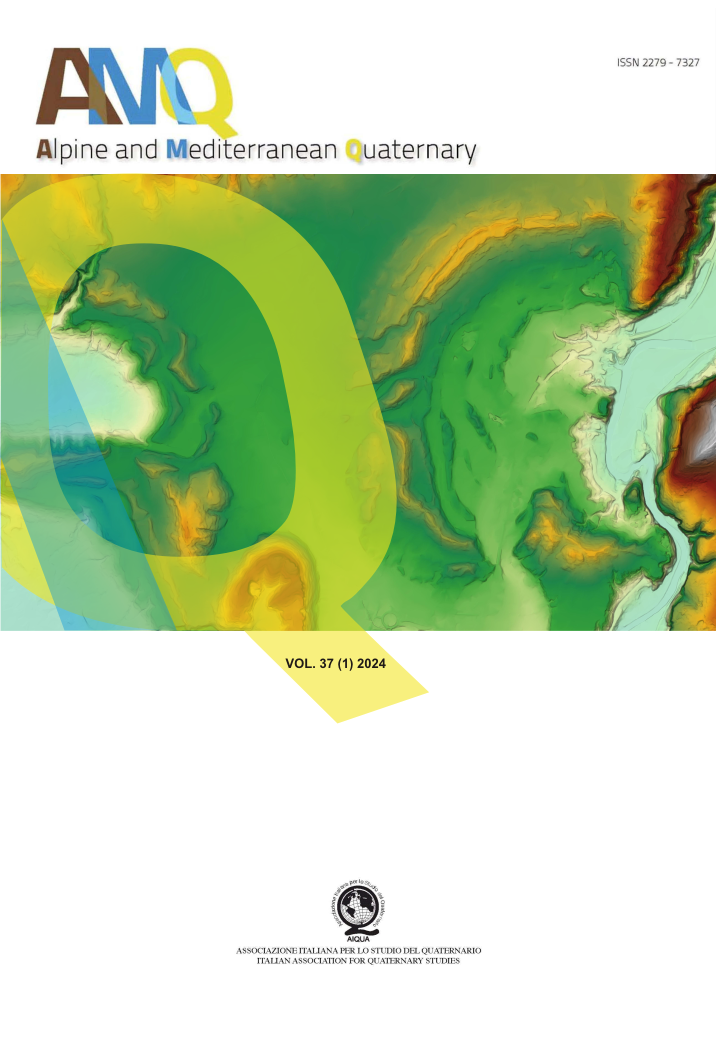Evidence of anoxic layers in the Central Tyrrhenian Sea between 29 and 4.2 ka
Main Article Content
Abstract
Heavy metals are analyzed in a continuous sediment record spanning from 29 to 4.2 ka BP, investigated in previous works by isotopic and micropaleontological studies supported by radiocarbon dates. In this study Fe, Mn, and Pb show significant correlations with paleoenvironmental changes. Pb proved to be a powerful proxy in paleoenvironmental reconstructions, being greatly enhanced during strong anoxia phases and showing conservative behaviour not influenced by post depositional diagenesis. Ombrone proxies suggest the formation of two reducing phases, the first during the Last Glacial Period at about 27.2 ka BP and the second during the Holocene, highlighting the presence of a reducing layer in the West Mediterranean between 7.4 and 5.2 ka BP, with a climax between 6.8 and 5.7 ka BP. In this period, enhanced river runoff reduced sea surface salinity, increasing the flux of continental organic matter into the basin with the formation of an anoxic environment. The presence of this reducing layer agrees with evidence of a “pluvial” period recognized by other Authors in the West-Central Mediterranean, partially synchronous with the Sapropel S1 formation in the East, suggesting its regional character, extending to the whole Mediterranean Basin.
Article Details
Issue
Section

This work is licensed under a Creative Commons Attribution-NonCommercial-NoDerivatives 4.0 International License.
The Author grants usage rights to others using an open license (Creative Commons or equivalent) allowing for immediate free access to the work and permitting any user to read, download, copy, distribute, print, search, or link to the full texts of articles, crawl them for indexing, pass them as data to software, or use them for any other lawful purpose.

